Discriminatory practices in public procurement of ICT
Putting figures on the map
Discrimination in public procurement of IT leads to...
- Vendor lock-in ;
- Higher expenses ;
- Loss in control and flexibility ;
- Market distortions.
How do you measure discrimination?

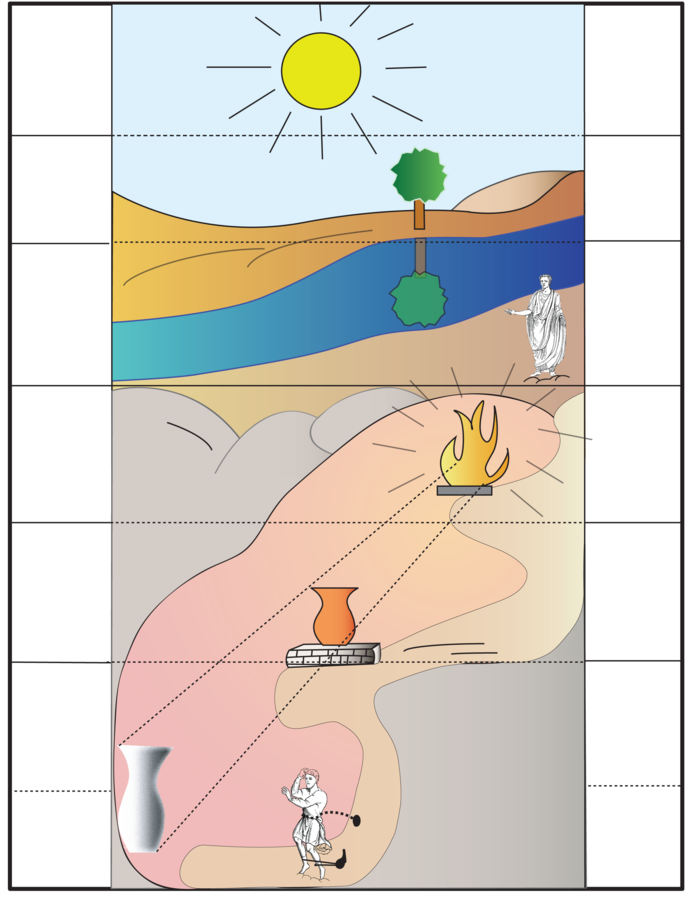
CC BY-SA 3.0 Gothika
Our shadows on the wall of the cave :
brand name references
What the law says
Unless justified by the subject-matter of the contract, technical specifications shall not refer to a specific make or source, or a particular process which characterises the products or services provided by a specific economic operator, or to trade marks, patents, types or a specific origin or production with the effect of favouring or eliminating certain undertakings or certain products. Such reference shall be permitted on an exceptional basis, where a sufficiently precise and intelligible description of the subject-matter of the contract pursuant to paragraph 3 is not possible. Such reference shall be accompanied by the words ‘or equivalent’.
Directive 2014/24/EU (and before that Directive 2004/18/EC) :
Our methodology
- Extracts of tender notices posted on TED ;
- “Software package and information systems” ;
- 3 months period ;
- Usually around 600-900 tender notices ;
- Full methodology here & detailed results available upon request.
Findings
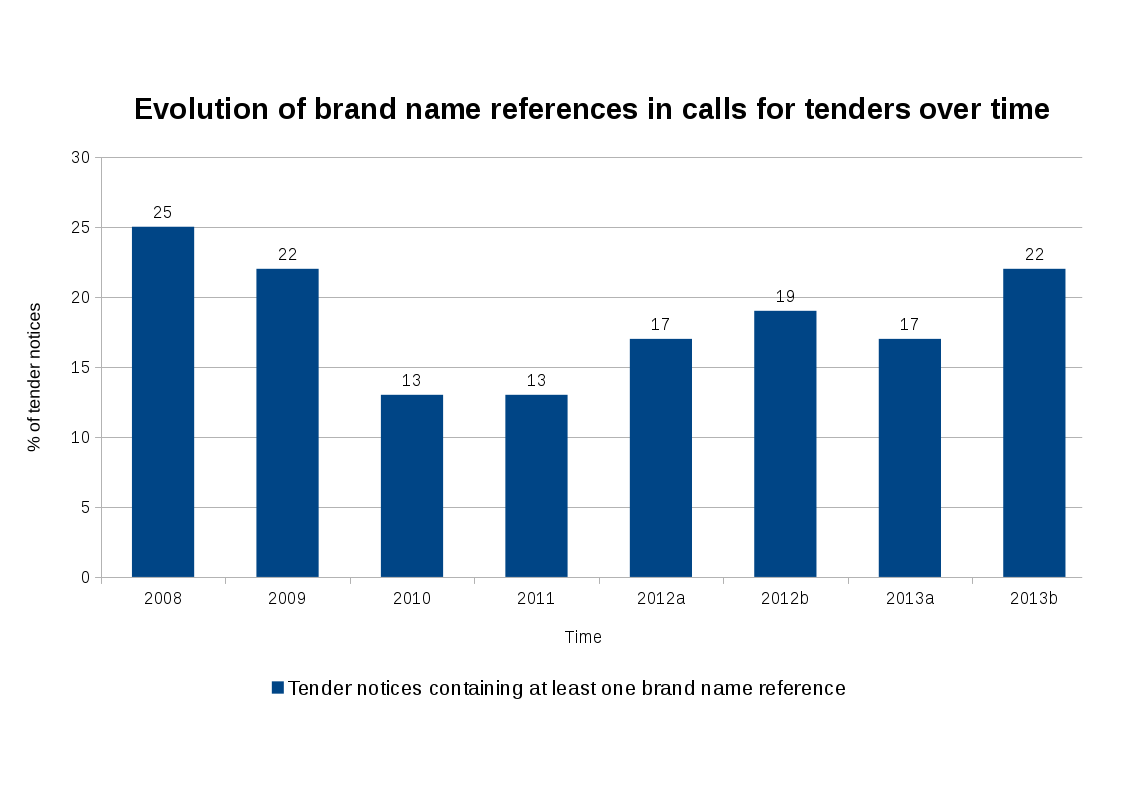
Taking a closer look
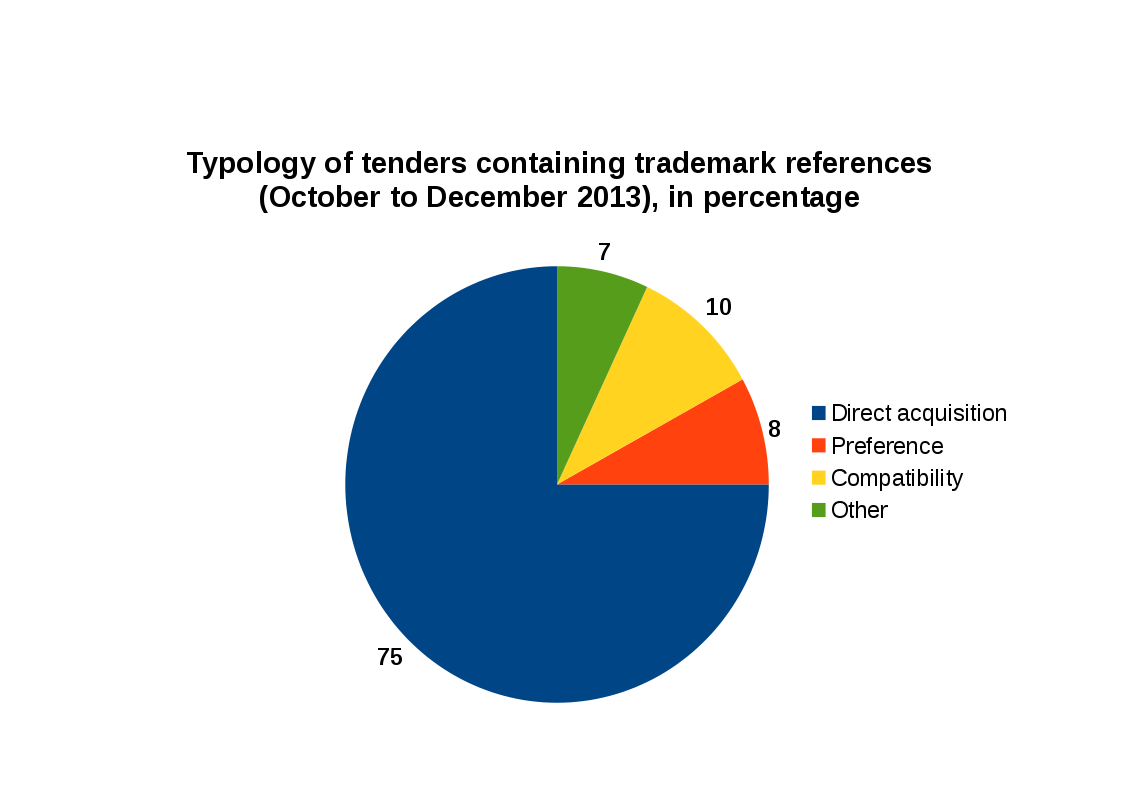
What brands?
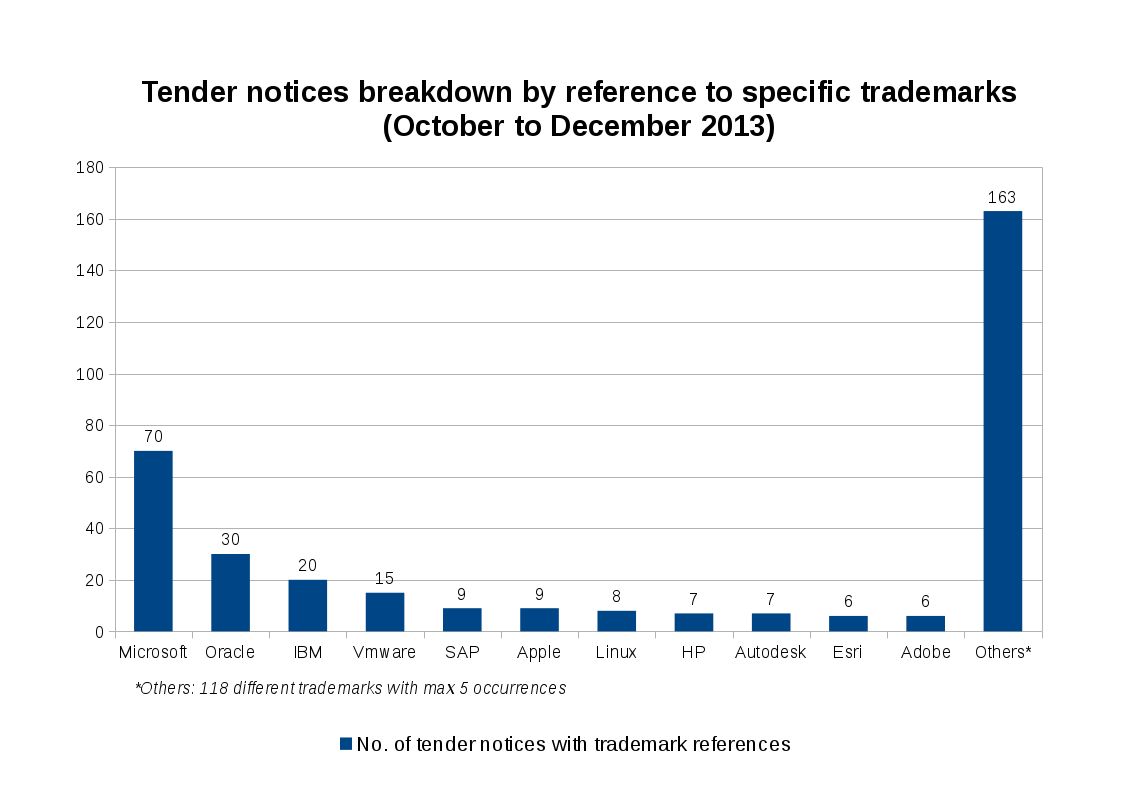
Which countries?
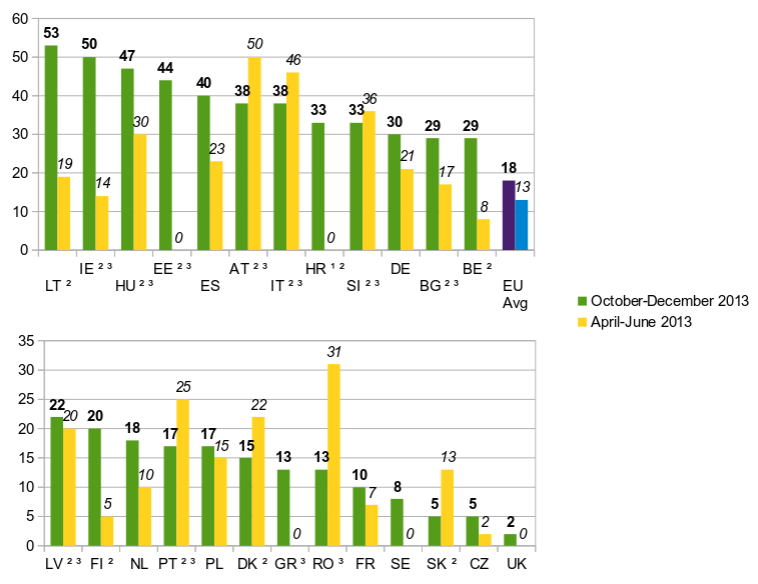
Proportion of tender notices with a discriminatory impact, by countries, in percentage


CC BY SA 3.0 Uwe Kils
A few recommendations
- Don't use brand name references (obviously), but don't limit yourself to removing them ! Prefer using Open Standards ;
- Education, education, education ;
- Look at and learn from what is happening in other administrations.
